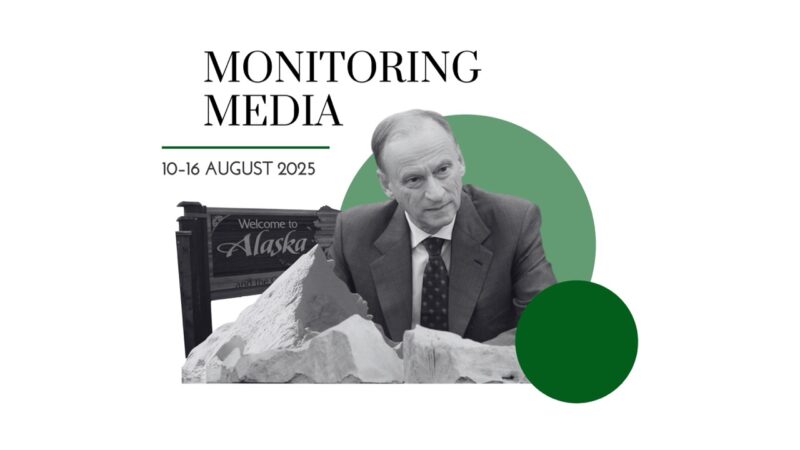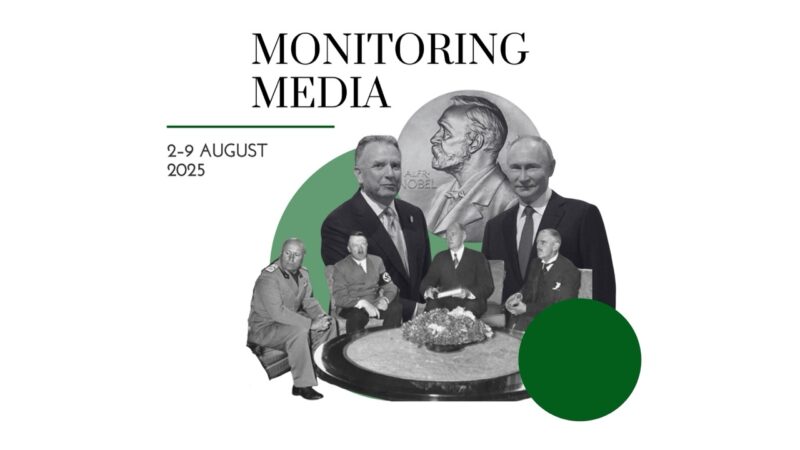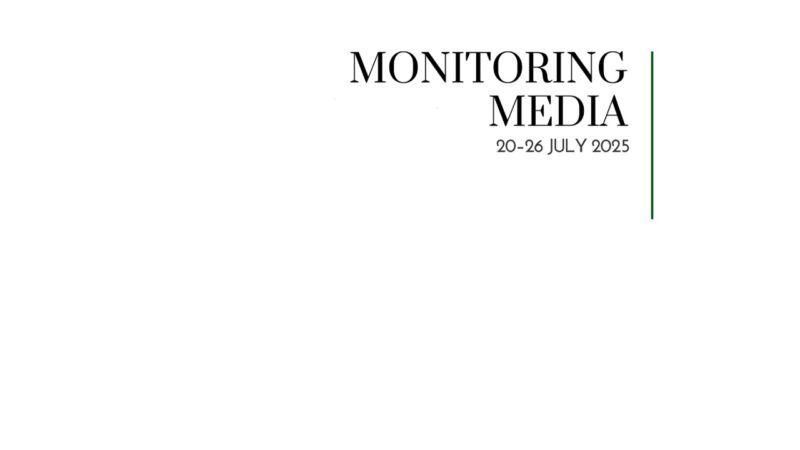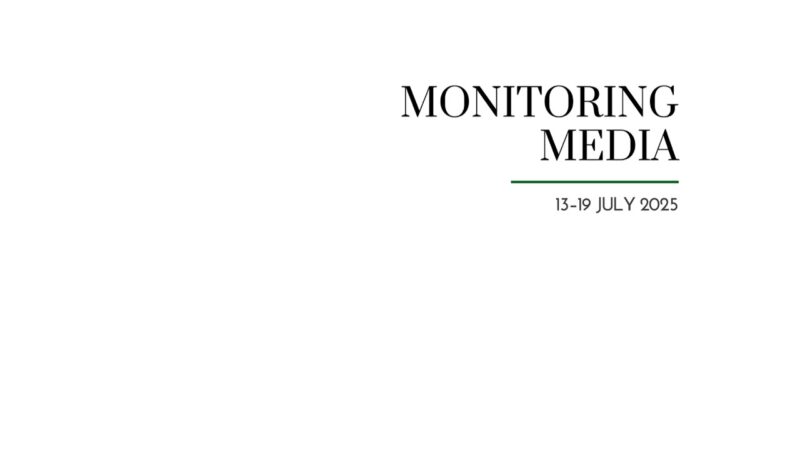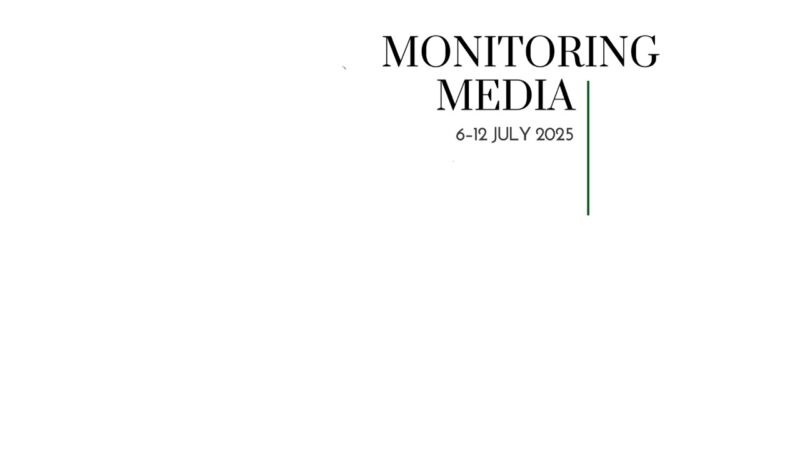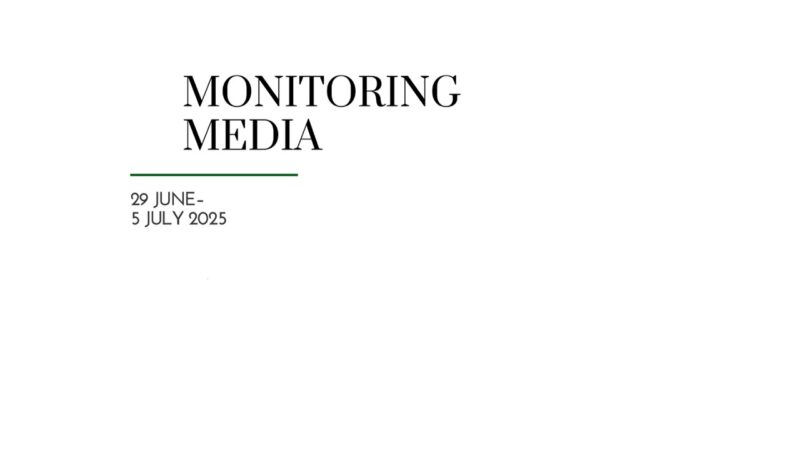Ukraine and Israel propose a new model of alliances for the US
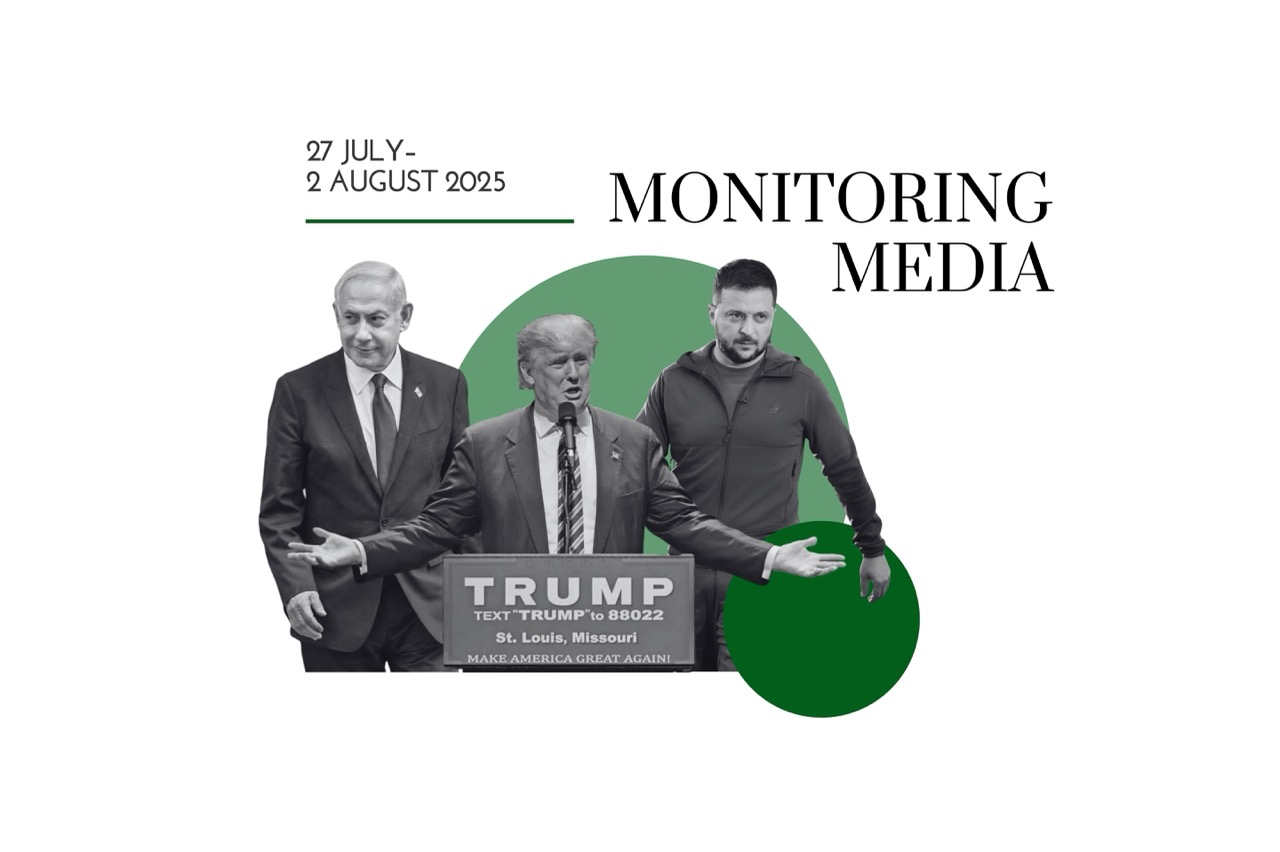
CIUS weekly report on North American media coverage of Ukrainian affairs, 27 July–2 August 2025
Five publications (Foreign Affairs, National Interest, National Review, The Globe and Mail, and Foreign Policy) were selected to prepare this report on how Ukraine has been portrayed in the North American press during the past week. The sample was compiled based on their impact on public opinion as well as on their professional reputation, popularity among the readership, and topical relevance. These publications represent centrist viewpoints on the political spectrum.
This MMS report covers only the most-read and relevant articles about Ukraine, as ranked by the respective North American publications themselves in the past week. Its scope covers promoted articles on home pages and articles from special sections on Ukraine, with the hashtag #Ukraine, from the paper editions of the publications, and about Ukraine from opinion columns and editorials.
Featured topics
- The world and Ukraine: Ukraine and Israel propose a new model of alliances for the US; Beijing’s ambivalence limits its role in the Russo-Ukrainian war; Ukraine needs backing, not timetables; Russia’s cognitive warfare seeks to shape perceptions, undermine Western support for Ukraine; Ukraine’s wartime economy in danger of sliding into cronyism amid corruption scandals.
- Russia at war: the myth of Russia’s invincibility is crumbling; Russia’s cognitive warfare seeks to shape perceptions, undermine Western support for Ukraine.
MMS summaries
Ukraine and Israel propose a new model of alliances for the US. Nick Danby (National Review) proposes that the US invest in allies who are willing to share risks, oppose common rivals, defend shared values, and compete where and when it matters most. Ukraine and Israel, unlike many others, are precisely such allies, as they can allow Washington to achieve its strategic goals at minimal cost and without risk to American soldiers or the threat of a third world war. Since Russia’s full-scale invasion of Ukraine in 2022, the US has provided Kyiv with more than $67 billion in security assistance, while in return, Ukraine has devastated Russian military forces at a scale unseen since World War II: “Russia’s Black Sea Fleet is a shell of its former self. As of June, Russia had lost more than 1 million troops in Ukraine as well as thousands of tanks, artillery systems, and fighting vehicles.” Modern alliances require evolutionary changes: “A new model has emerged—one fit for an age of great-power competition and constraints and grounded in convergence, not control, empowerment, not dependency.” Ukraine and Israel exemplify the new model of allied statecraft: “One in which the United States helps those who help themselves—especially partners who act independently, absorb risk, share burdens, and execute operations aligned with U.S. interests.” According to Danby, “America, too, must now think like a mature power. It cannot bestride the narrow world like a Colossus. Its strength lies not in occupying ground or checking every rival at every turn, but in enabling partners and orchestrating favorable outcomes.”
[MMS notes that the nation of Israel stands apart as the largest cumulative recipient of US foreign aid, both economic and military, in dollar amounts, since its founding in 1948]Beijing’s ambivalence limits its role in the Russo-Ukrainian war. Da Wei (Foreign Affairs) argues that Russia’s war against Ukraine continues to influence China’s foreign policy. There is no unified position within the Chinese establishment on the Russo-Ukrainian war: “Forty months into the war in Ukraine, members of China’s strategic community, including foreign policy and security officials, researchers, and pundits, still have differing views on who is at fault and how leaders in Beijing should respond. Chinese social media platforms have been ablaze with fierce debates between pro-Russian and pro-Ukrainian voices.” Some consider this war to be a conflict between two sovereign states, in which Russia violated Ukraine’s territorial integrity: “Given China’s own history of suffering foreign invasions, which has left an indelible mark on its collective memory, many Chinese leaders and citizens empathize with Ukraine.” Others view the military conflict as a continuation of the region’s reorganization following the end of the Cold War: “For those who view the region in this light, the war in Ukraine is also part of a decades-long conflict in which Western countries have ignored Russia’s underlying grievances and concerns.” China’s ambiguous position on the war in Ukraine over the past three years reflects internal divisions in Beijing: “The 12-point position paper on Ukraine issued by China’s Ministry of Foreign Affairs in February 2023 embodies this tension. The paper’s first principle emphasizes ‘respect for national sovereignty and territorial integrity,’ a statement that supports Ukraine’s defense of its territory. China has also never recognized Russia’s annexation of Crimea nor its claims over four eastern and southern regions of Ukraine. The paper’s second principle, however, which states that the ‘legitimate security concerns of all countries must be taken seriously,’ is a veiled show of support for Russia’s fears regarding Western pressure, including NATO expansion into what Moscow considers its backyard.” According to Wei, “China has tried to stay neutral or even passive in a war it neither anticipated nor welcomed. But this approach has not reduced tensions. Instead, and contrary to China’s wishes, the war has further entrenched great-power antagonisms among China, Russia, the United States, and Europe. No one has benefited from this outcome—least of all Ukraine. But until the war ends, it remains unlikely that anyone can reverse course.”
The myth of Russia’s invincibility is crumbling. Daryna Lesniak (National Interest) suggests that convictions about Moscow’s superiority in the Russo-Ukrainian war are no longer justified. She believes that Washington and other allies of Kyiv must reassess Russia’s ability to win on the battlefield and recognize its growing vulnerability: “In March, the Office of the Director of National Intelligence released a report that claimed that Russia had the ‘upper hand’ in Ukraine and was ‘on a path to accrue greater leverage’ to pressure Kyiv and its allies into a deal on Moscow’s terms.” However, recent events and failed attempts at peace negotiations indicate that this prediction is incorrect. According to the author, three factors must be considered when analyzing Russia’s ability to wage war: Moscow’s lack of success on the battlefield, its economic weakness, and internal political instability: “For too long, Putin has been perceived in the West as a dictator impervious to public opinion. But even in an autocracy like Russia, popular unrest can pose serious risks to regime stability. At the heart of this is a longstanding social contract: Russians are expected to stay out of politics, and in return, the state ensures a basic standard of economic security and order. Putin understands this—and history shows he is acutely aware of the dangers of alienating the public.” Instead, Ukraine is becoming more resilient: “Despite severe economic damage in 2022, Kyiv’s economy rebounded, growing by 5.5 percent in 2023 and 3 percent in 2024. Ukraine ramped up domestic arms production, building two million drones at the cost of $400 apiece last year. Ukrainians also began producing their own ballistic missile, the Sapsan, with a 300km range—matching the American ATACMS (Army Tactical Missile System), which the Biden administration repeatedly withheld over concerns of escalation.” According to Lesniak, “It’s time to abandon the myth that Russia holds the upper hand indefinitely.”
Ukraine needs backing, not timetables. Ruchi Kumar (Globe and Mail) offers a stark depiction of daily life under siege in Ukraine, arguing that Russia’s escalating strikes have made summer 2025 the deadliest since the start of its full-scale invasion. “The nights in Kyiv can get very loud,” Kumar writes, describing how “Ukrainians find themselves emerging from bomb shelters to find the air thick with smoke and ground full of wreckage.” Despite frequent attacks, residents try to maintain a kind of normalcy, with schools, hospitals, even maternity wards now underground while air raid sirens punctuate daily routines. Meanwhile, the psychological toll on the population, particularly youth, is mounting amid what the author calls an “increasingly familiar” threat from skies filled with Shahed drones and ballistic missiles. These attacks are a consequence of US President Donald Trump’s ambivalent approach to Ukraine policy, as his administration’s delays and mixed messaging have emboldened Moscow. Following Russia’s 24 April strike on Kyiv—one of the largest at the time, involving 66 ballistic missiles and 145 drones—Trump merely posted “Vladimir, STOP!” on social media, yet reportedly pushed to weaken sanctions legislation soon after. (MMS notes that the assault was later eclipsed on 9 July, when Moscow launched an even larger attack using 728 Shahed-type drones and decoys, seven Iskander cruise missiles, and six Kinzhal aeroballistic missiles.) Kumar also notes that US actions such as “vetoing a Canadian proposal to tackle Russia’s ‘Shadow Fleet’” and pausing deliveries of Patriot systems and Abrams tanks have increased Ukraine’s vulnerability. Though Trump has now issued a new 10–12 day deadline for Putin to act, these ultimatums may ring hollow without concrete action, as “Russian officials have themselves dismissed these warnings.” Kumar urges Ukraine’s Western allies to bolster Kyiv with weapons and humanitarian aid, to ensure the country can not only withstand Russian attacks but also enter peace talks from a position of strength.
Russia’s cognitive warfare seeks to shape perceptions, undermine Western support for Ukraine. Nataliya Bugayova (Foreign Policy) examines Russia’s extensive use of cognitive warfare—a strategy aimed at shaping how opponents think, decide, and act—in pursuit of strategic goals it cannot achieve through military means alone. While other states such as China, Iran, and North Korea also employ similar methods, Bugayova argues that Russia has proven particularly adept at using them “to aid in its war against Ukraine, shape Western decisions, preserve President Vladimir Putin’s regime, and mask Russia’s weaknesses.” The Kremlin’s objective is to erode its opponents’ will to act: “To achieve more, Russia needs others to do less.” By promoting the premise that a Russian victory in Ukraine is inevitable or in the West’s interest, Moscow seeks to convince Washington and its allies to limit support for Kyiv. The author situates cognitive warfare within Russia’s long-standing doctrine of “reflexive control,” tracing its roots back to Soviet-era information strategies. The Kremlin uses a broad arsenal—state-controlled media, diplomatic channels, conferences, and physical tools such as military exercises, cyberattacks, and sabotage—to reinforce narratives that obscure its failures and legitimize its actions. For instance, Russia often downplays Ukraine’s battlefield successes while concealing its own military shortcomings, including that “it would take Russia more than 100 years to capture the remaining 80 percent of Ukraine at its current rate of advance.” The strategy also extends to domestic control, with the Kremlin tightening censorship, suppressing independent media, and criminalizing dissent, as illustrated by the imprisonment of a teenager for using Ukrainian poetry to protest the war. Thus countering Russian cognitive warfare requires responding at the level of strategic reasoning, rather than reacting piecemeal to each disinformation campaign. The US and its allies should identify and reject the core premises the Kremlin seeks to implant, such as Russia’s claimed entitlement to a sphere of influence or the inevitability of its military victory in Ukraine. Demonstrating the limits of Russia’s narrative power through concrete actions—like Ukraine’s strikes on the Black Sea Fleet, which undermined Moscow’s portrayal of itself as a guarantor of global food security—can be particularly effective. By exposing and dismantling these false premises, the West can prevent itself from operating “within the artificial reality that cognitive warfare efforts seek to create” and instead make decisions rooted in the actual strategic balance.
Ukraine’s wartime economy in danger of sliding into cronyism amid corruption scandals. Luke Cooper (Foreign Policy) notes that Ukraine’s wartime economy has shifted toward heavy state intervention, combining domestic tax mobilization with substantial foreign assistance. While this model, resembling “military Keynesianism,” has helped sustain the war effort, it also risks fostering cronyism and rentier capitalism if public institutions fail to protect the public interest. Cooper warns that Ukraine’s experience illustrates the dangers of “a private sector that lives off state largesse with little risk and no public accountability.” Recent scandals have intensified these concerns, including blocking the appointment of an anti-corruption investigator, targeting of the activist Vitaliy Shabunin, and moves that “effectively destroyed the independence of the country’s anti-corruption agencies” (subsequently reversed by a new law — MMS). These developments, coupled with controversial privatizations—such as the sale of titanium producer UMCC to an Azerbaijani-owned company with ties to Russia’s economy—have triggered protests and drawn critical coverage in Western media, posing a strategic risk to Kyiv’s international support. The author believes that Ukraine must shift toward a “national security state” model, using its wartime economy to strengthen public institutions and set firm boundaries with private capital. The need for vigilance is underscored by past warnings from Finance Minister Serhiy Marchenko that “if you want to rebuild Ukraine, you must stick to the priorities of Ukraine.” The Ukraine Recovery Conference in Rome revealed tensions over investment “de-risking,” with private investors demanding extensive guarantees and governments seeking to channel capital toward strategic goals. Unless subsidies and guarantees are tied to strict accountability measures, Ukraine’s recovery risks being undermined by corporate capture—an outcome that could weaken both its war effort and its democratic governance.
